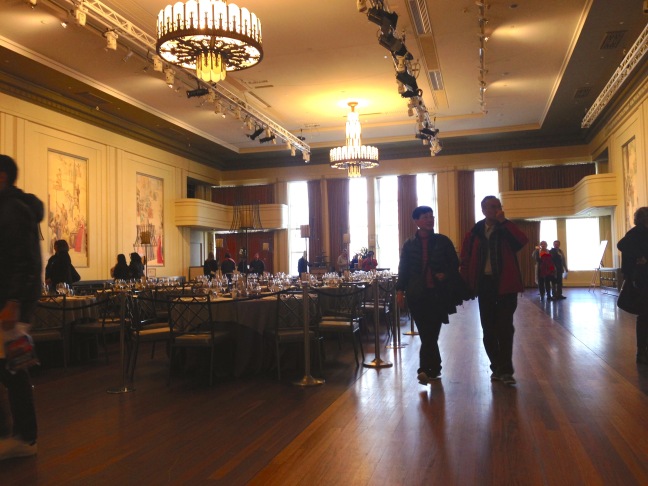Don’t we all have a pen name of some sort? My own nom de plume “H.A.L” of course is derived from Heuristically programmed ALgorithmic computer.
Here are some other, if less interesting, pseudonyms:
The Brontë Sisters:
Acton Bell – Anne Brontë
Currer Bell – Charlotte Brontë
Ellis Bell – Emily Brontë
Taken as a whole, the requisite amount of manliness they chose for their pen names to disguise that they were, gasp, women authors, matching the brooding, intense dreamboats whom they penned, that of course prior to this could only have been captured by a male author. (Still they could have been more manly).
Charles Dickens:
Boz
Now the reason this piques my fancy is because a childhood friend of mine in primary school had a dog named Boz, so I cannot separate that in my mind. Try harder next time, Charlie D! Maybe, Charles “12 inch” Dickens. Big Swinging Dickens.
Katsushika Ōi:
Ōi Ei-Ji
Ukiyo-e artist Katsushika Ōi, would sometimes sign her prints with “Ei” can be written with the pronunciation for “tipsy” or “drunk”, because she loved to get her crunk on. This is my kind of wordplay!
Benjamin Franklin – strap yourself in, he must have been a big fan of Alias.
Busy Body
BF, to be honest I don’t love this one. Feels a bit too clever and thought-out that it rubs me the wrong way.
Martha Careful
Again, BF, I like the Martha part, but the Careful feels a bit too smug.
Polly Barker
Nice and innocuous. I think I’m just reading a letter from sweet Polly Barker, then before you know it, you’ve been Benjamin Franklin-ed.
Richard Saunders
Nice follow on from Polly Barker, maybe her husband? There is something swarthy I like in this one.
Silence Dogood
Urgh, BF, enough with these ones.
Alice Addertongue
…no
Anthony Afterwit
…stop
Benevolus
Hold up, is that even a word? I like it.
Caelia Shortface
Here we go, you finally get it. What a great name! Caelia eyed the men offered before her across the ballroom, like a lioness tracking her prey; a Shortface always gets what she wants after all.
Samuel Langhorne Clemens:
Mark Twain
Clean and crisp. B+ overall, I’d say.
Thomas Jefferson Snodgrass
Fantastically fake sounding name of someone trying to sneak into a fancy party.
Josh
If it ‘aint broke, don’t fix it. “Did you hear who was in town? Why it was the fabulous author of Huck Finn, you know, Josh”.
Willard Huntington Wright:
S. S. Van Dine
All aboard, huh huh huh.
Arthur Hoey Davis:
Steele Rudd
Step aside Brontë sisters, you missed your chance at critical-mass manliness. Steele Rudd, oh you know your business. Although now that I’ve actually said “Steele Rudd” out loud, it more seems like a the name of a pornstar. A google image search with safe search off, sadly, produces nothing but clothed results.
Washington Irving:
Jonathan Oldstyle
On the subject of porn names, Jon Oldstyle fits that bill. I like this one particularly because it feels like a 19th Century gangster or hip-hop name. I feel “the street” when I look into his name.
Doménikos Theotokópoulos:
El Greco
“The Greek”. Oh a simpler time, where there was only one person of any nationality anywhere so you could get away with such a name. Or you were just that bigoted not to care, the Renaissance truly was a glorious rebirth.
Colonel Tickell:
Old Log
“Oh yes, it is a pleasure to meet you, Mr Log.”
“Please, Mr Log was my father. Call me Old.”
Frederic M. Halford:
Detached Badger
Now even I don’t have any idea what is happening with this one. It must have something to do with these angler authors, they are a salty breed…I guess…?
Touko Laaksonen:
Tom of Finland
What old Tom o’ Finland worked out perfectly was a pseudonym. Completely nondescript and unassuming, then you google image search Tom of Finland and bam, nothing but man-muscles.
Charles Edouard Jeanneret:
Le Corbusier
Now I’ve said this before, but I’m pretty sure Le Corbusier means “the Badger”, because he looks like a badger, or was grumpy like one, maybe? I don’t want to actually look this up though, because I don’t want to live in a world where this isn’t the truth.
Sources:
wikipedia search: list of pen names!



















